Wedding traditions and customs in Russia

Russian wedding is an interesting symbiosis of old national traditions, trends of the Soviet era and elements of Western style. Although many couples prefer to celebrate their weddings in a Western manner (onsite registration, replacement of the host by the host, absence of contests, accordionist, traditional ransom and meeting with bread and salt), most of the spouses adhere to the classical traditions.






Matchmaking
In ancient times, before sending matchmakers to the bride's house, they were carefully selected. As a rule, relatives became matchmakers. The main purpose of a matchmaker is to be an authoritative person in the eyes of others and to know what to say in a given situation. The peculiarities of weddings in Russia consisted in the fact that the bride and her future spouse were not familiar before the wedding, and it was the skill of the matchmakers that depended on whether the wedding would take place at all.
Only by their speeches it was possible to understand how good the groom is in terms of his characteristics and qualities. Matchmaking has always been accompanied by jokes, songs, dances.



As part of the matchmaking, many symbolic rites were performed, some of which are still observed today.
Loaf
This attribute was most often brought by matchmakers from the groom's side. If the girl agreed to the wedding, she cut the loaf into pieces and distributed it to everyone present, starting with the parents. The loaf had to be eaten to the last piece - then the future marriage was considered successful and happy.



Towel
This attribute was used to bandage matchmakers if the girl agreed to the wedding. Matchmakers presented a towel as a gift from the bride's parents to the groom's parents.
Today, the towel is used in matchmaking as a dish for a loaf. After matchmaking - stored until the solemn day.



There were certain dates and even days when the outcome of the matchmaking could end most successfully. Such dates included the 3rd, 5th, 7th and 9th of each month, as well as October 14th. The last date was especially significant, since it coincided with the Feast of the Protection of the Most Holy Theotokos. It was impossible to get married on the 13th of any month. Among the days of the week, weekends, Tuesdays and Thursdays were best suited for matchmaking.
Matchmakers, having entered the house of the future bride, never openly declared the purpose of their visit. They talked with the owners of the house on abstract topics, and then from a distance they came to the point. The bride's parents welcomed the guests, treated them to drinks (they were served by the bride-to-be).
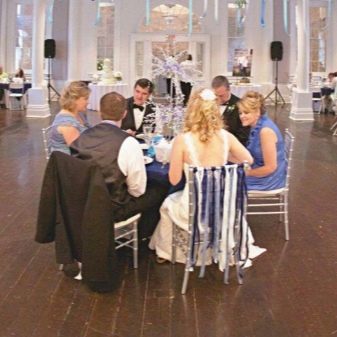

At this time, matchmakers looked closely at the girl, began to inquire about her and praise the groom. If the groom received a refusal, then, as a rule, it was a very laconic answer: “Our apple hasn’t poured yet”, “Our goods are not for sale”, “We haven’t accumulated enough money yet” and others.
If the results of the matchmaking were positive, then after discussing organizational issues, the bride gave her betrothed a pledge - a handkerchief.
A piece of loaf was wrapped in a scarf, and the matchmaker carried it up, so that everyone could see that the matchmaking was successful and the wedding would soon take place.

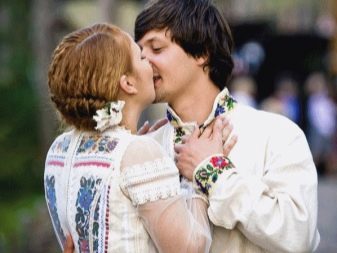
Today, the decision on the wedding is made by the lovers themselves. Only after that, parents and other relatives will learn about the upcoming event. Of course, matchmaking in many families is carried out to this day (as a certain tribute to old traditions, parents). It is during this pre-wedding ceremony that the bride's parents can better see and recognize the groom.
Today matchmaking is carried out in a simplified form. Matchmakers do not arrange dramatized scenes, sing little and do not say jokes. The groom, entering the bride's house, presents flowers to all the women present. Matchmakers bring fruits, alcoholic drinks, sweets. The bride receives a valuable gift from the groom and future father-in-law and mother-in-law.



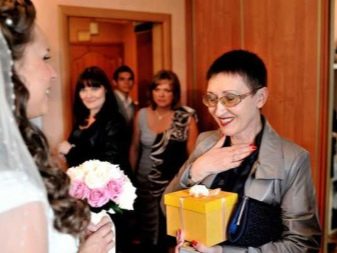
Most often it is a piece of jewelry, but it can also be an old heirloom. The bride's parents are presented with an inexpensive gift, but with meaning: a horseshoe (a talisman for housing), a beautiful candle (for comfort and warmth in the house), a photo album (for good memories) and others. As soon as the exchange of gifts and mutual greetings have taken place, all those present are invited to the table, where the details of the future wedding are discussed.
To prevent matchmaking from turning into a boring evening, you need to choose the right matchmakers. The most suitable option is talkative natures who are not burdened with shyness, complexes that can captivate everyone with them.



The groom who comes with the matchmakers must remain silent. It is matchmakers who should shine with eloquence. Having greeted all those present and informed about the purpose of the visit, matchmakers can come up with a whole kaleidoscope of comic tests and tricky questions for the bride. The same tasks, carefully prepared by the bride's relatives, await the groom.
In the midst of matchmaking with typical jokes, the moment of the marriage proposal stands apart. At this moment, both the groom and the bride's parents should be very serious, but sincere. The groom can ask the parents to marry his daughter to him at the very beginning of the meeting or at the table.



After the engagement was announced to everyone, the main wedding chores began. The bride, along with household chores, had to prepare a dowry for herself and sew a wedding dress. In remote villages, there was even a custom to go out every day on the porch of the father’s house, sob and lament about the fear of entering a new life. Nowadays, such a ritual is no longer observed.
In addition, a bachelorette party was held on the eve of the wedding. Today in Russia a bachelorette party is celebrated very magnificently and loudly, but in the old days it was a rather quiet evening with sad songs.
The bridesmaids would braid her braids, weaving in satin ribbons, then unwrapping them.



It was believed that in this way the bride says goodbye to her former unmarried life. The bride herself cried and lamented. The ribbons from the bride's braid were considered endowed with meaning: the bridesmaids took them apart and kept them for happiness and early marriage.
The groom's pre-wedding preparation consisted of baking a huge painted loaf, decorated with flowers, figurines and interesting dough patterns. The entire female half of the house was engaged in the creation of this culinary masterpiece until dawn, accompanied by loaf songs. The groom had a bachelor party on the eve of the wedding. His family and friends were present at this evening.



Ransom of the bride
In Russia, the ransom of the bride was a very responsible matter, requiring considerable generosity from the groom. Today the monetary component has already receded into the background. The main purpose of the ransom these days: passing all the tests-contests prepared by the bridesmaids, the groom proves to everyone how well he knows and loves his future wife. Friends from the groom's side can always come to his aid, if necessary.
After the ransom is completed, the bride's parents will organize a small table for those present.
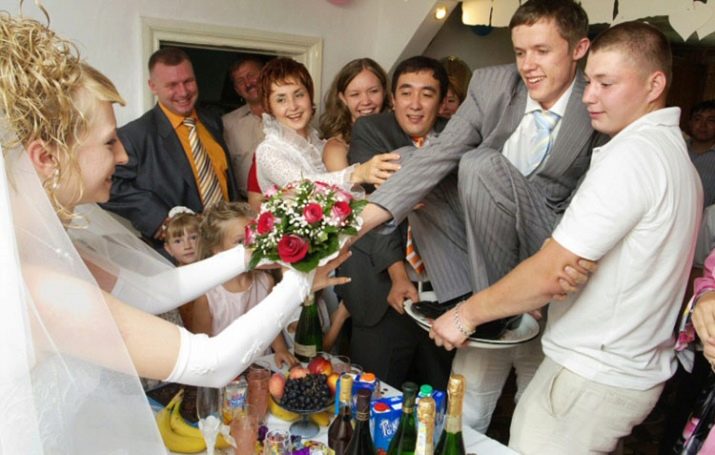



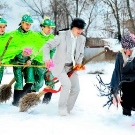
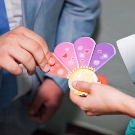
Wedding ceremony
The wedding takes on a new hue after the official ceremony at the registry office. Many modern couples delight themselves and guests in the hall for official ceremonies not only with the first kiss, but also with the first dance (you must first agree on a specific composition).
After the official part, the guests will have a photo session with the young. Then the guests of the holiday should stand on both sides of the exit from the registry office in order to shower the young with rose petals, rice, coins or sweets.



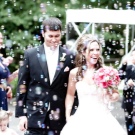


According to folklore, this rite (depending on the products chosen) bestows wealth, healthy offspring, and a romantic and sweet life together for the young. If the newlyweds are true believers, then according to the customs of the Russian people, on the same day they undergo a wedding ceremony.
After the official events, celebrations begin. Usually only the closest friends are involved.
In order to keep colorful photographs as a keepsake, young people visit and hold a photo session in the most picturesque corners of the city.



The groom carrying the bride across the bridge is also an integral tradition in Russian weddings. According to legends, young people must do a similar procedure on seven bridges, then their union will be strong. But in the conditions of modern celebrations and the congestion of the main city highways, it is not always possible to do this, therefore the tradition is respected, but the number of objects is reduced to one. A memorial castle with the initials of the young is also left there as a symbol of the strength of marriage.
In Russia, the newlyweds, after the wedding, visited the father's house of the groom. The mother-in-law greeted them with bread and salt (loaf), and the father-in-law at that time was holding the icons. The bride and groom had to bite off part of the loaf. The head of the family was determined by the size of the bite off. At the same time, the ceremony of blessing the new family took place. Today, a meeting with a loaf is increasingly taking place in the banquet hall in the presence of guests.



Outfits
The first thing at a wedding is always paid attention to the bride's dress. Its color is, in most cases, white. The bride gets a new dress, although some girls prefer to wear their mother’s dress on this special day, wishing to inherit her happy family life. A new dress is a symbol of entering a new life, and white is a symbol of youth and purity. That is why women who get married several times wear outfits in blue or beige shades for subsequent ceremonies.
If in Russia a wedding dress was always bright red, then at modern celebrations you can see brides in white attire with bright accents or delicate trim in pastel colors.




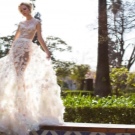

The color red today is the lot of courageous and extraordinary personalities. Veils have become optional in modern weddings. It is perceived as an adornment of the hairstyle. You can replace the veil with a veiled hat.
According to legends, there must be something old in the dress of the bride. Most often it is family jewelry or an element from the mother's wedding dress. This attribute is a symbol of the relationship between generations. Also, the outfit must contain a detail borrowed from a girlfriend. It is believed that then there will always be true friends next to the young, ready to help in difficult times.
In order for harmony to reign in a young family, the bride must be wearing something blue: a garter, an accessory, an element of a dress, a makeup component.



Feast
The wedding script is built in such a way that congratulations take the main place in it. Parents are always invited to do this first. Then the floor is given to relatives and friends. In order to prevent the money envelopes from forming a messy heap, and by the end of the evening they are not lost at all, the bride herself or her bridesmaids specially make a box with a slot. A witness helps the bride to collect gifts in cash on the day of the celebration.


After the first toasts and snacks, guests are invited to the dance floor. According to tradition, the first dance always remains with the young (if it was not in the registry office). It is very fashionable today to do staged dances, for which the bride and groom have been diligently engaged in a dance studio for several months. For a spectacular performance, the bride and groom can temporarily wear other outfits.
Another traditional dance during the feast is the dance of the bride with her father. By this action, he blesses his daughter for a happy life in another family.



When the wedding celebrations come to an end, the toastmaster announces the need to transfer the family hearth from parents to children. This ceremony is carried out as follows:
- candles are distributed to all present;
- everyone goes to the middle of the room, stand in a circle and light candles;
- the light in the room is extinguished;
- quiet slow music sounds in the background, during which the toastmaster talks about the meaning of this tradition;
- parents of young people on both sides light their candles and go out to the center of the hall, standing next to their children, light a home for a new family with their candles.
At the end of the wedding, the bride's mother or newly-made mother-in-law helps the girl to take off the veil. At first, she must resist it, but after persuasion, she must agree. After that, the young husband untwists his wife's braids. The toastmaster at this time tells about the history of this custom.



Present
In the old days, the most common wedding gifts were:
- animals (cow, horse, pig, chickens, ducks);
- a set of towels without fringes;
- whip.
They all had a symbolic meaning. Animals symbolized the appearance of healthy babies, towels - a smooth life, a whip - the dominance of the husband in the family.
Today, it is customary to give money, dishes, computers and household appliances, bedding, cutlery, audio and video equipment for a wedding.
Recently, pre-ordering of gifts has been widespread: the newlyweds, long before the wedding, notify the guests about what they would like to receive.






Traditions on the second and third day of the celebration
It is very rare for a Russian wedding to be celebrated on one day. As a rule, the day following the celebration implies an informal setting. The second day is celebrated in the bosom of nature - with barbecue, strong drinks, songs. And on the third day, the spouses can go on their honeymoon to some hot exotic country.


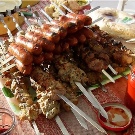



For more information on Russian wedding traditions, see the video below.








